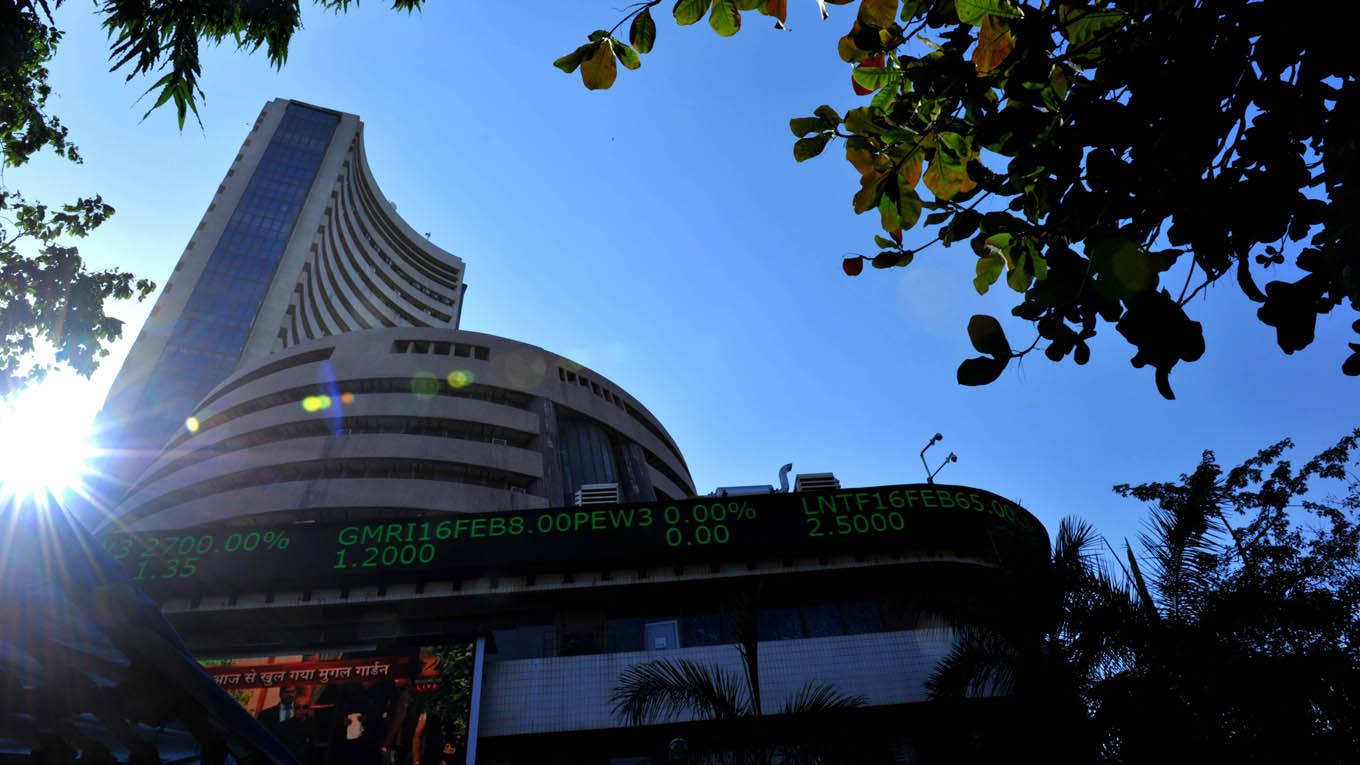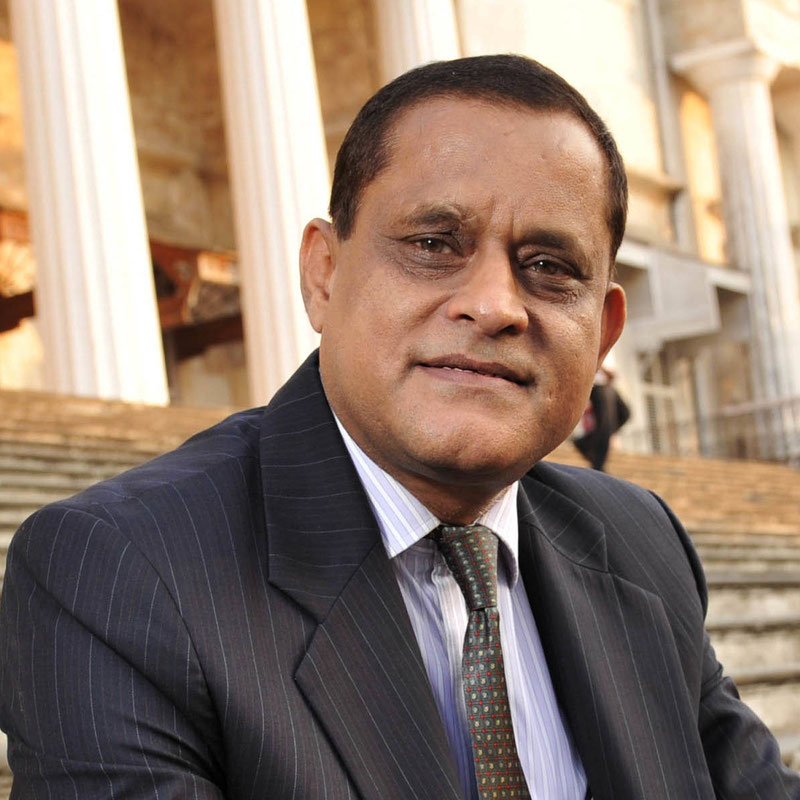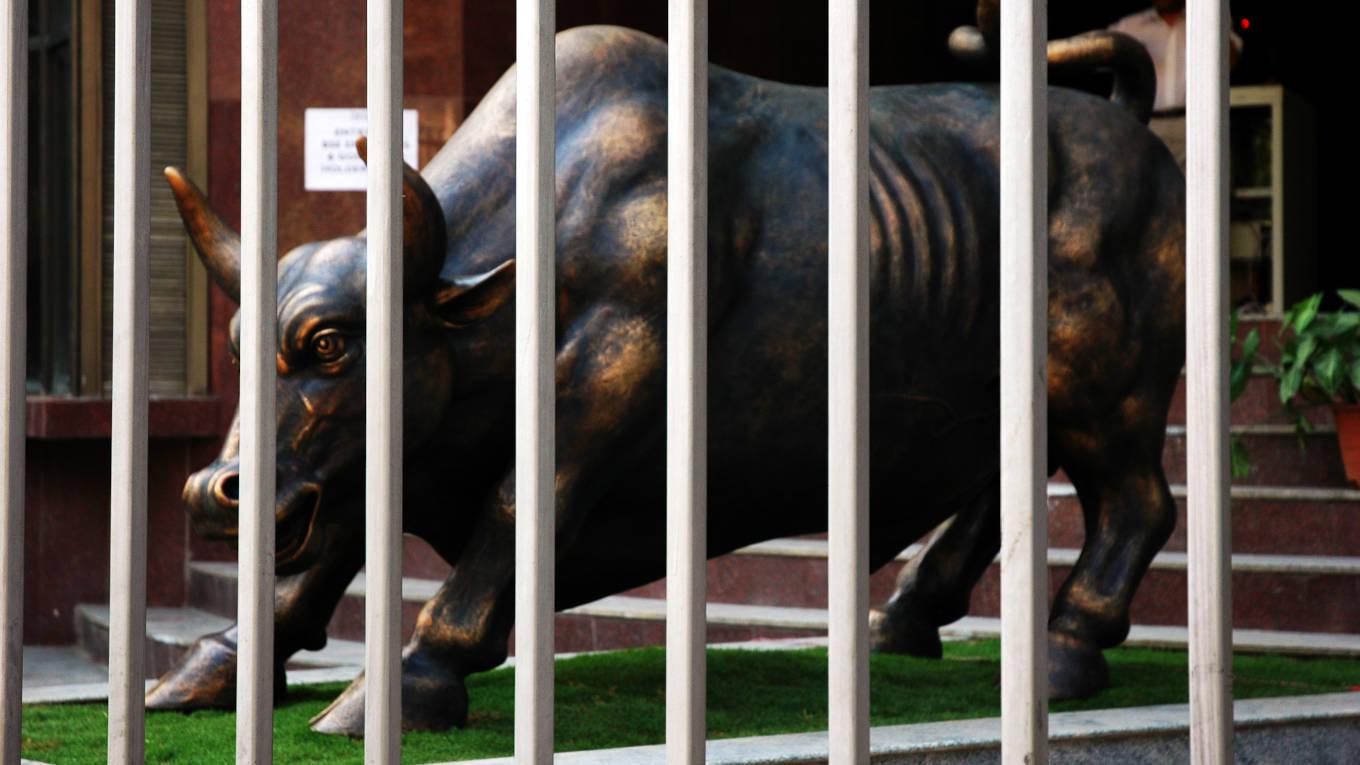-
Market liquidity has been driving valuations. Valuations will continue to be the case in such markets
Yes, more often than not, Indian markets apes global indices, especially Wall Street. However, the world over, the stock markets have been bullish in correlation to the stimulus infused by their governments. Countries like the US, Japan, Italy and Germany doled out huge stimulus packages on the basis of their GDP, and their stock markets recovered almost 40-50 per cent from their lows.
“But a comparatively weaker package in India has led to a weaker recovery of around 30-32 per cent. Each country has its own unique economic dynamics and the Indian market will soon start reflecting its own economic realities. Therefore, time has come for the Indian bourses to decouple from the global stock indices,” says Modi.
Currently the Indian market is more in sync with global markets and is fuelled by global liquidity to a large extent. “As far as earnings are concerned and the notion that markets are rallying despite bad earnings; I think this should be seen from the point of fear of the unknown. The markets hate uncertainty because you can’t control the outcome and can’t price uncertainty. So, even if we move from an uncertain regime towards a more certain one but with bad outcomes, the initial reaction could be positive and markets have done exactly that. Globally, markets rallied on news of various economies opening up,” explains Narendra Solanki, head-equity research (fundamental), Anand Rathi Shares & Stock Brokers.
“Market liquidity has been driving valuations. So, valuations are high and that will continue to be the case in such markets. The challenge has been the speed at which the market has managed to run up which is far ahead of economic recovery and that poses challenges,” says Naveen Kulkarni, chief investment officer, Axis Securities. “The recent rally is in sync with the rally across global markets. In fact, Indian markets have underperformed many other markets in recent weeks. We believe this is essentially due to worries on the rising number of Covid-19 cases and weak economic outlook due to Covid-19 and the lockdowns,” says Srinivas Rao Ravuri, CIO equities, PGIM India Mutual Fund.
-

The market will suck in the last bull before the next downwave begins
Jimeet Modi, Samco Securities
So what’s in store? There is a mixed bag of reactions. “Across the world interest rates have been cut and that has led to an increase in risk appetite. Also stock markets and the real economy are not necessarily the same thing. The stock market has become a barometer of economic power of a handful of companies rather than the reflection of the broader economy. In this crisis many companies and businesses may never recover. The surviving companies will become more powerful, and this reflects in the rise of the stock market,” explains Shankar Sharma, vice-chairman and joint managing director, First Global, a global investment management and securities firm. Sharma particularly likes the small cap space which has been beaten down tremendously over the last three years. “It looks like a very interesting space provided you do your research and due diligence carefully.”
“This Covid spell has caused a severe dent in our economy and its continuity is much deeper than what we expected in early April. On the one hand we have substantial deficit in direct/indirect tax collections and other capital receipts, and on the other the government has to pump in large sums of dole outs, grants, stimulus and guarantees to keep economic activities going and contain unrest at the bottom. This will not only result in a deficit for the current year but may also build a liability balloon for future years, if the economy doesn’t fast track growth in the next two or three quarters,” says Mahesh Singhi, founder and MD, Singhi Advisors.
The macroeconomic position of India at this stage is precarious. Economic activities had come to a grinding halt from around 20 March 2020 and it is only now (in the second week of June) that India is slowly emerging from rigorous lockdowns. “Estimates are that it will take at least 3-4 months for the economy to come back on track, provided there are no further lockdowns. Thus, the first half of the current year will be a wash out in terms of economic performance. On one hand there is a need for a massive stimulus to bring the economy back on track and on the other hand, there is a severe fall in government’s revenue collection for the foreseeable future. Thus, the ability for the government to take incremental fiscal measures is severely constrained,” feels Sudip Bandyopadhyay, group chairman, Inditrade Capital.
For Gaurav Misra, senior fund manager, Mirae Investment Managers, the macro situation is evolving but should not get out of hand. There are positives such as the benign financial conditions – inflation, liquidity and rates, robust rural economy, a reasonably low trade deficit, moderate levels of government/household debt and high forex reserves. “So the government has to tackle the budgetary deficit problem and not so much the current account issue. Even on the budgetary deficit front, as the unlocking unfolds economic activity, the strength of recovery will have a bearing on government finances. This will become clearer in the months ahead. The government also has control on the timing of some its expenses,” he says, pointing out that the monetary stance has been appropriate for the current circumstances.
-

Surviving companies will become more powerful
Shankar Sharma, First Global
“On the monetary side there is definite scope to do more, depending on how the combination of inflation and growth emerges. On the fiscal side the quality of additional government spending will be important. The support which was required for the most vulnerable during the lockdown phase will not be required as the economy opens up. However, the government if required, can attempt to be more expansionary (fiscally) at the right time if it helps revive stronger sustainable growth. The additional growth will take care of raising taxes/resources.”
“The macro-economic scenario is under control as far as the current account deficit is concerned due to lower crude prices and lower gold imports. This is also reflected in the relative stability of the rupee. In contrast, fiscal deficit is stretched due to lower tax collections and the fiscal stimulus which we calculate to have a cash element of 1-1.2 per cent. The central government has announced borrowings of R12 lakh crore and state government borrowings is expected to be another R8-10 lakh crore. This will push the combined fiscal deficit to above 10 per cent of GDP. Structural reforms to boost investment and growth is critical to bring the fiscal deficit back on track over next 3-5 years,” says Prathit Bhobe, CEO & MD, Tata Asset Management, pointing out that government effort is focused towards calibrating the stimulus with the timing of complete lockdown removal and the need to protect the sovereign credit rating.
“It is important to note in this context that the rating agencies are probably going to take a more lenient view of fiscal deficits this year than in the past. However, given the persistent uncertainties regarding the timing and extent of recovery, the government has been cautious in minimising the ‘cash element’ of the fiscal stimulus and reducing the debt to GDP ratio to retain its investment grade rating. There is relatively greater room in the monetary policy in the form of rates cuts. More importantly, unconventional measures from the RBI like open market purchase of government securities, possible private placement of government securities is expected keep yields lower and support the demand side of the economy,” adds Bhobe.
“The broader macro remains stable and seen to be improving after having witnessed lockdown shock. The rural economy is better off than urban areas due to the limited lockdown in rural areas, little disruption of agricultural activities by the lockdown, near normalisation of agro wholesale markets in May, a bumper rabi crop, bright outlook for kharif, high MSP and stimulus measures including cash support augurs well for rural demand. Even if you see the latest arrival data of mandis – that is also very encouraging,” says Solanki of Anand Rathi Shares & Stock Brokers. However, agriculture accounts for just about a third of income in rural areas, the remaining is from industry and services so there is some resilience but it is not completely insulated.
-
The rural economy is better off than urban areas due to the limited lockdown in rural areas and little disruption of agricultural activities
Narendra Solanki, Anand Rathi Shares & Stock Brokers
Notably, the government’s net tax revenue stood at R21,412 crore in April, significantly down from R71,637 crore in April 2019. So yes revenue collection is a challenge for the current year and is very much dependent on how the situation improves going ahead. “Coming to the twin deficit problem, the significant part of our current account is oil imports and oil prices do play a role with oil demand being largely inelastic. With prices at historic low levels the situation is not bad in this particular aspect for now. To overcome current account deficit India relies more on net capital inflows through FDI and FPI routes. However, to achieve more stable and predictable flows we need to focus more on FDI flows which are of long durations. These can be attracted with policies encouraging business investments, relaxation of regulations, better infrastructure, etc,” says Solanki.
According to Sudhakar Shanbhag, chief investment officer, Kotak Mahindra Life Insurance Company Limited, the GDP for FY21 is expected to contract anywhere between 2-5 per cent due to the impact of the virus on the economy during Q1FY21, which has added to the slowdown experienced before March 2020. “Inflation though, from now, is expected to be in the range of RBI’s comfort zone due to supply measures, demand contraction and an expected normal monsoon. Crude oil at below $40 until now and expected to remain benign due to global growth concerns is also a positive for India. On the external front our forex reserves, which are inching closer to $500 billion which is close to about 12 months import cover, is also comforting. Contraction in imports higher than exports will keep our CAD in control. The combined fiscal deficit though due to lower revenue collections as well as the additional fiscal spending and the lower nominal GDP growth will be in the range of 11-12 per cent during FY21,” says Shanbhag, looking at the government which has announced a series of measures to take care of the bottom of the pyramid section of the population who have been most effected as also the MSME segments, farmers, etc.
“Government revenue collection is going to be half of the budgeted figure and it will be very tough to fill the gap; due to this, inflation will increase and purchasing power will fall drastically. The government has given around Rs3 lakh crore dole outs which also will have a hole in the economy. It already has a fiscal deficit of 4 per cent which will further increase to 6 to 6.5 per cent,” feels Lalit Dangi, CMD, Libord group.
The macro-economic challenges are quite significant as Covid-19 is still very much a reality and cases have continued to rise. Even as economic activity is picking up, for it to normalise will take time. However, the tax collection scenario should improve going ahead. “The fiscal deficit for this year is given and it will significantly exceed the targeted number, but the government has been prudent in its stimulus plans and the deficit challenges are still manageable for the year. There will be significant cut in capital expenditure by the government and the focus will be on necessities and normalising the economy,” observes Kulkarni of Axis Securities, adding: “the monetary policy is already loose and the RBI has been cutting interest rates. The system liquidity is decent but the challenges are about re-starting the economy and stoking demand. While the government has some room for further dole outs, as it has been prudent in its policy framework, but even then the critical factor will be the demand challenges.”
Clearly, according to Modi of Samco Securities, these are recessionary times for the country and with the uncertainty on the vaccine front, things might deteriorate further. “India’s growth outlook has deteriorated and GDP is expected to be close to zero or even negative for the current fiscal. This contraction will certainly strain public debt which was already at 70 per cent of GDP in FY20. Also, stimulus measures to the tune of 10 per cent of GDP were announced by the government, however the fiscal portion was significantly less which otherwise ought to have been higher for a short-term booster. With the government’s disinvestment plans not making headway and GST collections dipping, India’s fiscal deficit is expected to widen further,” he says.
-

The Bombay Stock Exchange building. Picture credit: Sanjay Borade
Meanwhile, the GST collections for the month of May have been lower compared to April collections. “Due to this contraction in revenues and rising expenditure it is expected that we will certainly miss the fiscal deficit goal this year. The problem lies in the fact that the government is trying to bridge this fiscal gap by taking on more debt. In May, it announced a R12 trillion borrowing to finance the fiscal gap. This increase in debt will be a bigger burden on our country which will not be easily met just by mere tax collections. The government will certainly need to come out with innovative ways to manage this rising gap,” says Modi.
“The government has not officially released the GST collection data since March this year but as per a news report, India’s GST revenue collection is down 60-85 per cent for April and May. Going ahead, the revenue collection would improve due to the re-opening of the economy but it would still be lower on an absolute basis. Given the current scenario where the unemployment rate has spiked substantially, the government would have to increase spending to support the underprivileged sections of the society. Even some of the sectors, which have been hard hit due to lockdown, are hoping for some relief in terms of a stimulus package or tax sops to withstand this current storm. On the flip side, the current account deficit is in a better place, while exports have taken a hit. India’s imports have also come down substantially due to lower demand in the economy,” says Gurpreet Sidana, chief operating officer, Religare Broking.
“We are going through an unprecedented crisis that is still unfolding. This is an extraordinary and desperate time. And, desperate times like these call for desperate actions on the economic front. The demand side of the GDP of our country has severely been hit with propensity to consume has come down drastically. The government can boost the demand side of the GDP in two ways. One, it could massively ramp up its expenditure. And two, it could boost propensity to consume by reducing the tax rates. But on both counts the fiscal measures announced so far have fallen short. While the government has promised a further fiscal boost, there is no clarity as of now. The RBI has done its bit to loosen the monetary policy to a large extent. But the impact on reviving the demand side of real economy in the short term is limited,” feels Saibal Ghosh, chief investment officer, Aegon Life Insurance.
Although, the macro-economic position of India at this stage is precarious, the banking system is awash with liquidity. “There is a significant aversion to risk at this stage, predominantly amongst bankers. However, even corporates are risk averse. Thus, corporate risk aversion in a way stems from risk aversion of the bankers. No banking system in the world can function effectively if the current levels of risk aversion prevail. The height of risk aversion is apparent when banks borrow from the RBI and put back the same funds with the RBI through the reverse repo window. Steps need to be taken by central banks and the finance ministry to provide comfort to the bankers and incentivise lending/risk taking. In fact, the risk aversion with the bankers started much before the Covid-19 inspired 2020 lockdown. Of course, the same has become acute post the lockdown,” observes Bandyopadhyay of Inditrade Capital.
-

There is a weak economic outlook due to Covid-19 and the lockdowns
Srinivas Rao Ravuri, PGIM India Mutual Fund
“In the last few years we have been witnessing lower capex cycle and beginning FY20 the cycle was expected to revive as planned capex by the private sector rose about 42 per cent as per RBI report to Rs1.2 lakh crore. Coming to the banks, the problem of sitting on massive liquidity and not lending is due to the weak balance sheet of the borrower which has got further strained due to the current crises. One should not expect any concessions on risk front at least from a private bank as they also have to safeguard shareholder interests,” says Solanki of Anand Rathi.
This is an evolving phenomenon. “On a holistic basis, if we see the management commentary post the Q4FY20 results, most companies are talking about normalising the business scenario and managing the cost structure. The emphasis on growth seemed to be absent. This does indicate that corporates and banks will be conservative. However, companies like Reliance Jio have raised a lot of capital in the last 2 months. Companies in the digital space are seeing good pickup in activity. Thus there are pockets where investments will come but in most categories the slowdown poses challenges for investments,” adds Kulkarni of Axis Securities.
So, banks, while staring at NPAs, will also find it difficult to lend to quality businesses. “Capacity creation is an unlikely theme. Most likely it will be working capital, business banking and retail lending which will see some uptick – but there will be challenges of NPAs. Thus, risk appetite across the system will be limited.”
“The banks/financial institutions will have a tough time after 31 August 2020 when the moratorium on NPAs will be lifted. Corporates will utilise less capacity. Hence banks will find it difficult to repay loan instalments and interest, which may further increase their NPAs. The NPAs may go up to 15 per cent of the bank’s portfolio by December 2020,” feels Dangi.
Definitely, risk aversion has intensified amongst corporates and bankers due to the weak economic situation. “Corporates have put the growth and capital expenditure plans on hold as they are not sure about the future scenario, and even bankers are not in any mood to lend to risky/aggressive projects, and companies with subdued balance sheets. Banks are gearing up to face the NPAs in the coming quarters. Whether this risk aversion comes back to normal will be a function of economic revival,” says Rahul Sharma, research head (equities), Equity99 Advisors.
-
Whether risk aversion comes back to normal will be a function of economic revival
Rahul Sharma, Equity99 Advisors
Actually speaking, lenders were already sitting on the fence, much before Covid took a toll on them. Many of the large and midsized corporates, who were already struggling with excess borrowings and lower earnings, were extremely cautious in investing in additional assets and Covid has only aggravated it further. “However, this situation is not going to last since most banks have already factored in such NPA’s and have witnessed an increase in liquidity and deposits, which are likely to go up further – providing positive pressure on the lenders to deploy, take risk and also reduce lending rates. Moreover, their NPA provisioning as a result of business losses with borrowers is largely addressable with the current guidelines of deferment of interest and instalments, cushioning them against such unwarranted provisioning towards Covid affected borrowers,” says Mahesh of Singhi Advisor. He feels that corporates with strong balance sheets and disciplined management, who were hitherto acting cautious, will start getting action soon, smelling opportunities in beaten down valuations for asset acquisitions to consolidate their position, backed by lower borrowing costs.
“Banks lack risk appetite. Banks think it is their divine right to make 15-plus per cent RoE. They did truckloads of bad funding in the beginning of this decade and are now just hiding. They are waiting for the fine print even as the government has underwritten R3 trillion worth of loans to MSMEs,” says Satish Kumar, head of equities, Equirus Securities. “Lots of speculation is being made regarding NPAs because of the lockdown. I think MSMEs are the hardest hit, where the government has given fresh lease of life by underwriting new funding and providing equity funding. If banks want to do risk free funding then it’s a different matter.”
It is very natural to conserve cash and capital for uncertainties during such unprecedented times, adds Shanbhag of Kotak Mahindra Life Insurance. In terms of the levers of economic growth, consumption and government spending has done the heavy lifting and it may now be time for private investments and net exports to pick up. The banking industry will definitely face challenges in NPAs across sectors and segments. “Any early signs of either a cure or vaccine for the virus as well as any early rebound in the economy post lockdown can change this risk-averse approach. Currently we are in a vacuum which has not been experienced by the current generation and hence may take a bit more time to align,” he says.
Generally, Q1&2FY21 will be a complete washout for corporate India. “Demand recovery will probably happen from Q3 which will coincide with the festive season. This all assumes no further spread of the virus and consequent lockdown. Thus, it will be safe to assume that overall earnings growth will only be visible on an annualised basis during the next fiscal,” says Bandyopadhay.
-

The fiscal deficit of 4 per cent which will further increase to 6 to 6.5 per cent
Lalit Dangi, Libord Group
Most sectors are likely to witness a decline or moderation in revenues and profitability for at least two quarters of FY21. With the pandemic heavily impacting consumer behaviour, the economy is likely to witness a slow revival in demand in some sectors while supply shocks at others due to sudden accumulated demand. “Short term growth is likely to remain muted due to the crisis stemming from Covid-19. However, the several fiscal and monetary measures may eventually translate to lifting the economy in the medium term. Business cycles may witness improvement in H2FY21, however, earnings reporting normal growth largely depends on how fast economic activities are operating at normal levels,” says Sunil Pachisia, CEO, Pratibhuti Investments. He points out that while IT, pharma, and FMCG are likely to stay afloat; most other sectors may take a few more quarters to report decent growth.
Current valuations may look high but cannot be only linked only to contraction in one year’s GDP or loss in earning in a particular year. “Businesses are valued based on their sustainable growth and maintainable margins along with entry barriers they have created. It will be unfair to re-price stocks based on extraordinary circumstances and it still remains to be seen how different sectors will get impacted in the short term as well as long term, and accordingly such stocks may get re-priced. Certain sectors like aviation, leisure, retail, etc, will have a long-term impact on their business viability and will have to be valued differently as compared to most sectors which will bounce back to normalcy and that’s where the market may move in different tandems,” says Mahesh of Singhi Advisor.
By and large, Indian markets have been mirroring the buoyancy of global markets for the last two weeks, despite domestic challenges. The easing of the lockdown and opening of economies across countries including India has raised investors’ hopes of the economy getting back on track. “Notably, after the outflow of Rs89,000 crore from January-April 2020, FIIs turned net buyers in May as well as in June (as on date) to the tune of Rs13,915 crore and Rs15,000 crore, respectively, on the back of improved sentiment, conducive market valuation and stimulus packages announced by the government to boost growth in the economy. We believe the positive FII flow would continue going forward with the revival in demand as well as growth. Besides, the normal monsoon forecast by the IMD has also lifted sentiment,” says Sidana of Religare Broking.
A vaccination will bring vibrancy to the economy as activity will normalise and we go back to living as we did before. This will usher a major resurgence in demand across discretionary plays. At this point, it is difficult to say where the change is permanent. But some trends are very strong, such as ‘Work From Home’ digital businesses. Labour costs could increase in labour intensive sectors where there have been challenges of labour dislocation but they are likely to be temporary in a country like India. Overall, the focus of most companies will be to make their cost structure leaner by introducing automation, digitisation, reduced dependence on physical infrastructure, etc.
Markets are moving up as the economies are slowly opening and coming back to normalcy. However, the rally in our local market should be seen in the context of the global equity rally. Globally central banks such as the US Fed and ECB have offered a lot of support to the financial market. Also, the US government and other developed nations have offered a lot of fiscal incentives to boost demand in their economies. This has led to a huge liquidity-led hope rally in equity markets. This has been a reason for a global equity rally led by the US with Nasdaq at its all-time high. As they say, what goes up has to come down – wait and watch.







































